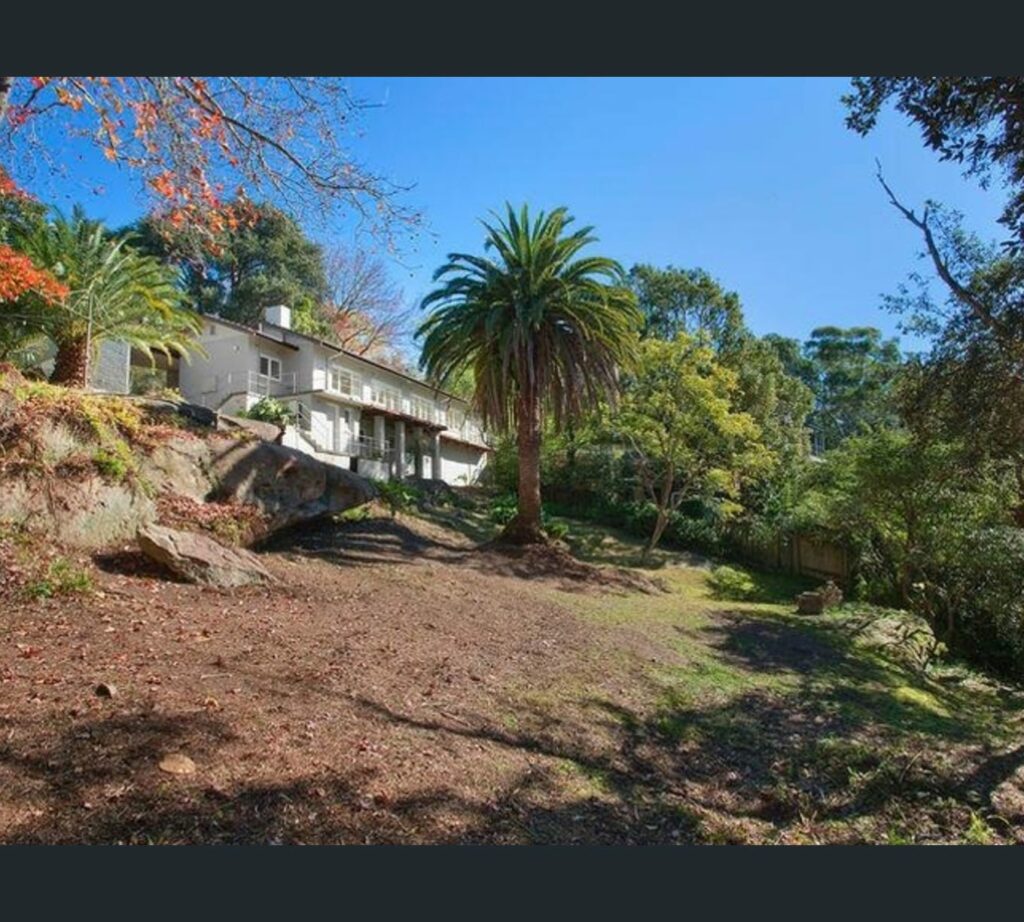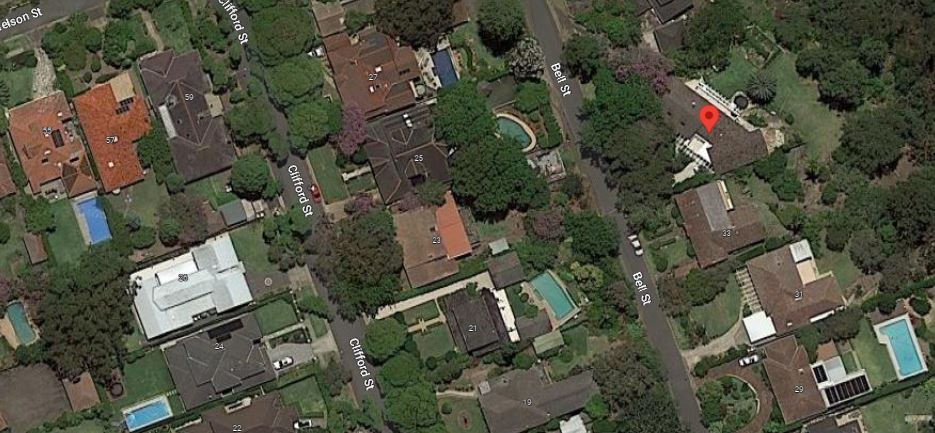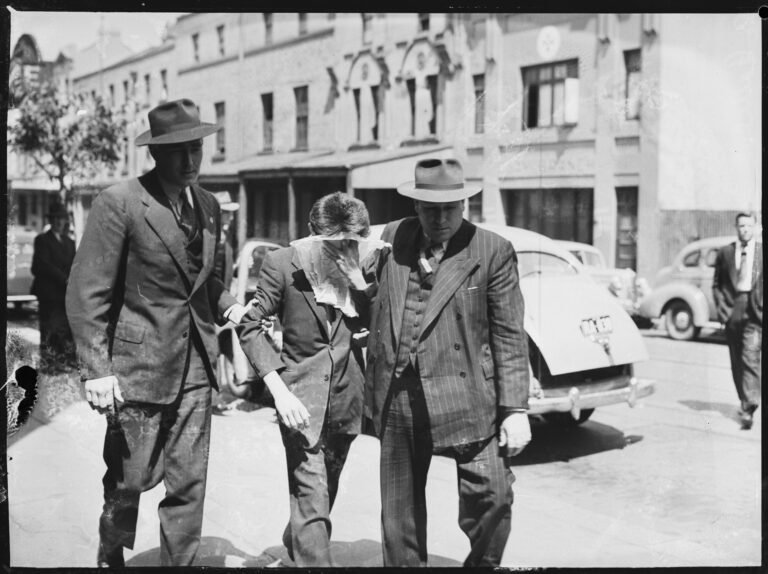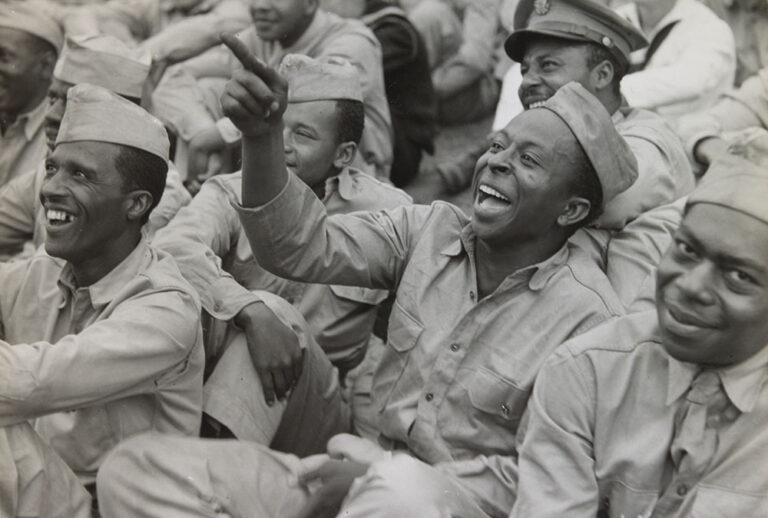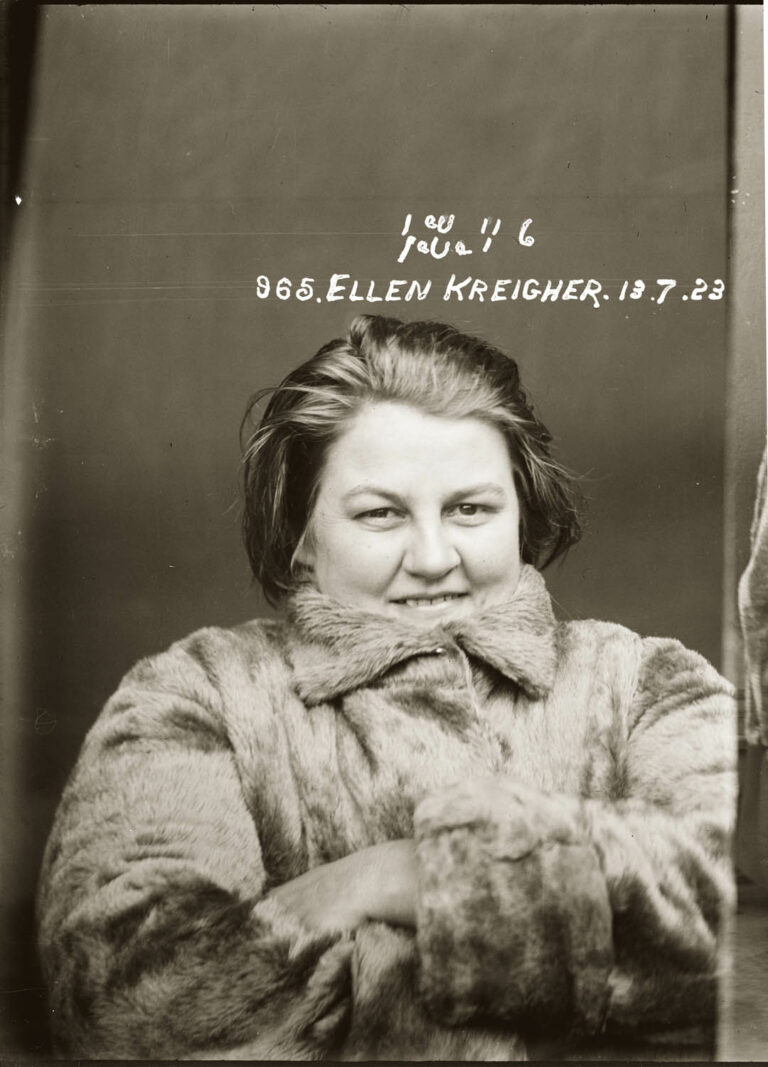Who Killed “Bully” Cook?
Halmar Olsen was an electrical mechanic working in the scrubby gully that dropped away from Clifford Street, Gordon, towards Stony Creek. In 1922, Clifford Street had only recently been subdivided, and Bell Street still did not exist. While navigating the steep sandstone escarpment covered in thick grasses and shrubs, Olsen came across a grizzly sight. Down a fifteen-foot drop was the body of a man lying facedown in a pool of blood. As Olsen climbed down to assist the man potentially, he began to notice a deep, fatal wound in the crown of his skull. Several colleagues of Olsen’s soon arrived on the scene, and a few saw a beer bottle approximately ten meters from the deceased. One of the men picked it up and smelt its contents, passing it around amongst each other before placing it back where they found it.
Detectives from the Criminal Investigation Branch (CIB) of the NSW Police were called to the scene. It appeared at first that the man had perhaps been drunk and died from a tragic accident; however, the wounds on the head didn’t seem to corroborate with a fall. They set up a crime scene and collected evidence, including the beer bottle, a blood-stained bag, and five copper pennies in the dead man’s pocket.
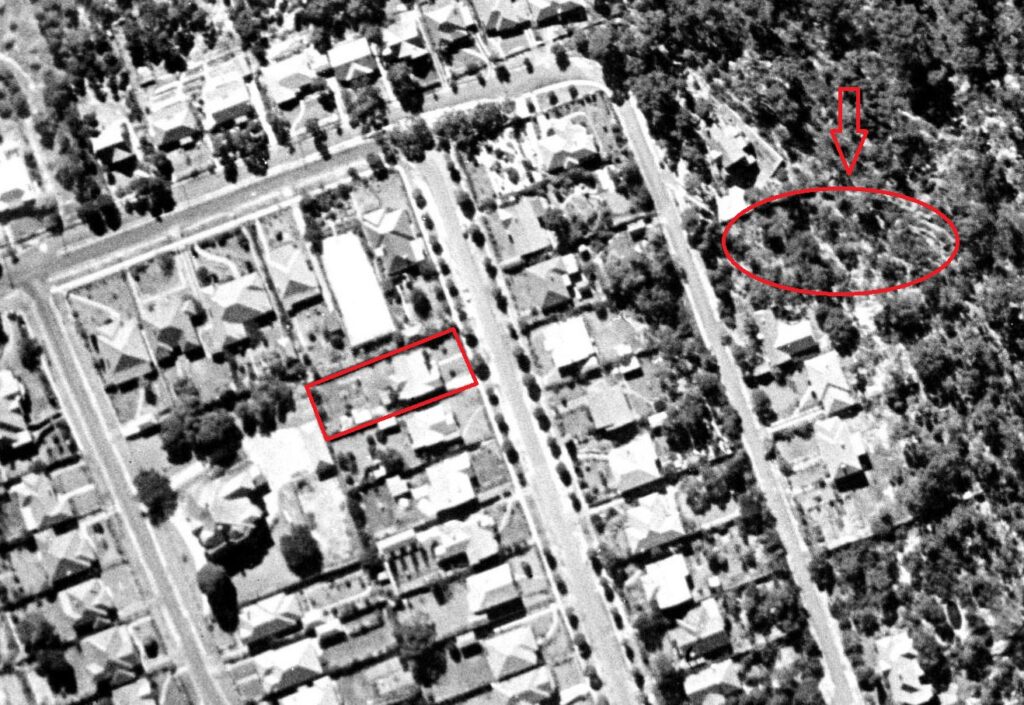
“Bully” Cook
The dead man was identified as Mountford “Bully” Cook. Cook was a local carter aged 40 who lived in a tent on a vacant lot approximately where 44 McIntosh Street is today. He had been born in Lindfield and lived his entire life in Ku-ring-gai. Although he was known to be severely addicted to alcohol, many said he had no enemies and was well-liked. It was revealed to detectives that Cook had been employed to assist a carpenter named Talisien Griffiths in constructing a small cottage at 26 Clifford Street. Cook’s body was discovered approximately 100 meters east of the newly built cottage. Years later, 35 Bell Street was built where the body was found.
After being moved to the mortuary, doctors discovered Cook’s head had thirteen separate wounds, with the right side of the head completely smashed. Each injury was caused by a blunt object, except for one. There was a hole on the top of the head, which had been caused by an instrument with a pointed end.
It appeared “Bully” Cook had been murdered.
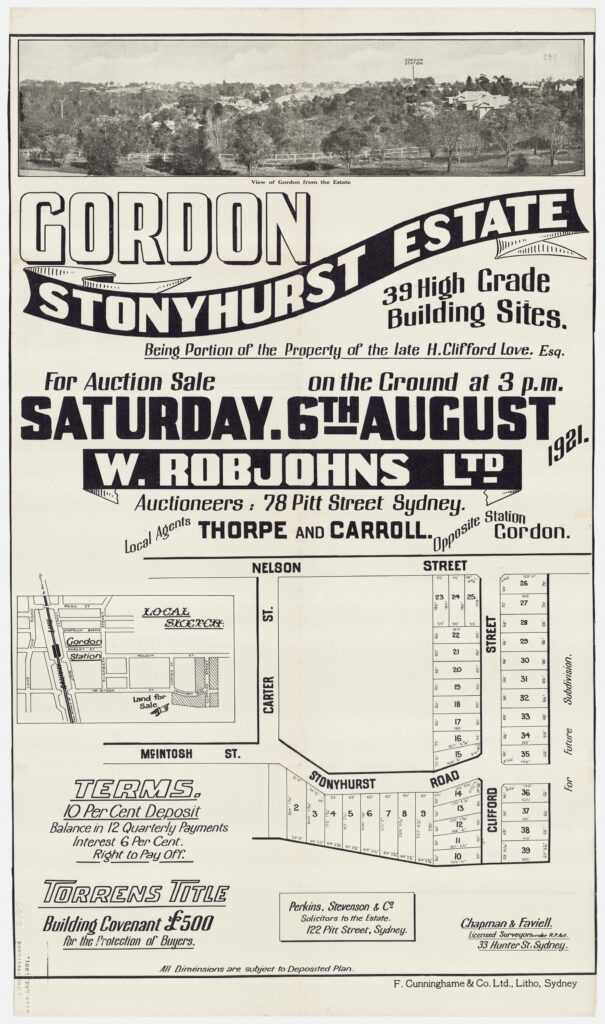
Witness Reports
Cook was last seen alive on the afternoon of Friday 24th of March. He was seen drinking at the Greengate Hotel with his employer, Talisien Griffiths. Several witnesses observed the two men arguing over a payment dispute. One witness overheard Griffiths threatening to hit Cook. Cook was then seen leaving the hotel at 5:40 pm. He was said to be sober.
The last time he was seen alive was at 6:20 pm, driving his horse and wagon near Rosedale Road and McIntosh Street towards his camp. The following morning, two men went by Cook’s camp, respectively. Both saw his horse tied to a sapling by the road, but neither man saw Cook in his camp. One at 6 am and one at 7 am. Cook’s livelihood came from that horse; it seemed very unusual that he would just tie it to a small sapling by the street.
It became clear to detectives that Talisien Griffiths was a suspect. The argument over money and the proximity of the murder to his construction site made the case against him most compelling. However, there was still the matter of proving a) what time Cook was killed and b) if Griffiths was nearby.
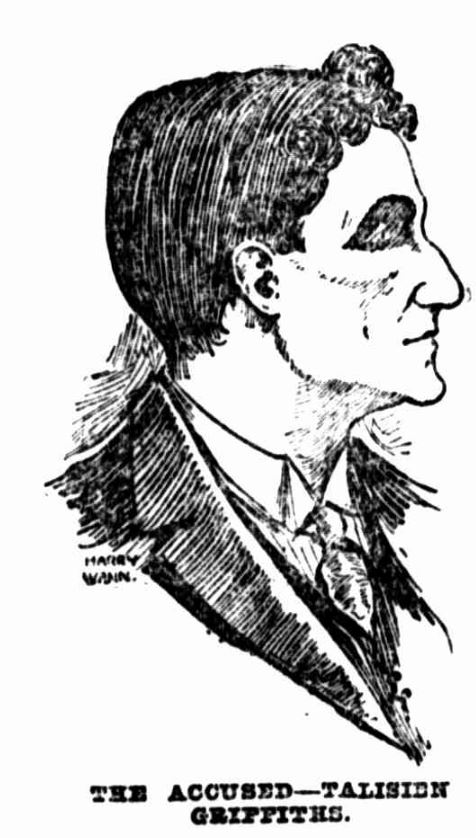
Where was Talisien Griffiths?
He was seen at the Greengate Hotel until at least 6 pm. He then visited Mrs Edith Blanchard at 30 McIntyre Street at 6:30 pm to discuss a party she was hosting that night. He is next seen by Mrs Olive Patterson, the owner of the cottage next to the one he was building. She was sitting on her verandah when Griffiths appeared from the dark and asked her the time. “8 o’clock,” she told him. He next goes to a stable at Pymble owned by his friend Frank Currall. He and Frank went to Edith Blanchard’s party from 10 pm to 4 am. Frank says they both returned to the stables and went to sleep, but when Frank woke at 6 am, he found Griffiths missing. Griffiths returned later that morning with several bottles of beer.
Where was Griffiths between 6:30 pm and 8 pm and between 4 am and 8 am?
The owner of 26 Clifford Street said he was inspecting the building site from 7:20 pm to 7:55 pm, and Griffiths was not there. So why did he appears only 5 minutes after the owner left?
Then the question remains, where was he on Saturday morning?
Detectives visited Griffiths at his Sutherland home for a statement. He agreed to accompany them back to the station in the city. He also gave them the clothes he was wearing that day. There were blood stains on the clothing that he said were not from “Bully”. A few days later, Griffiths was charged with the murder of Mountford Cook. He fronted a Coronial Inquest where the coroner heard more than twenty witnesses and found that Cook died from injuries inflicted by Griffiths and committed him to stand trial.
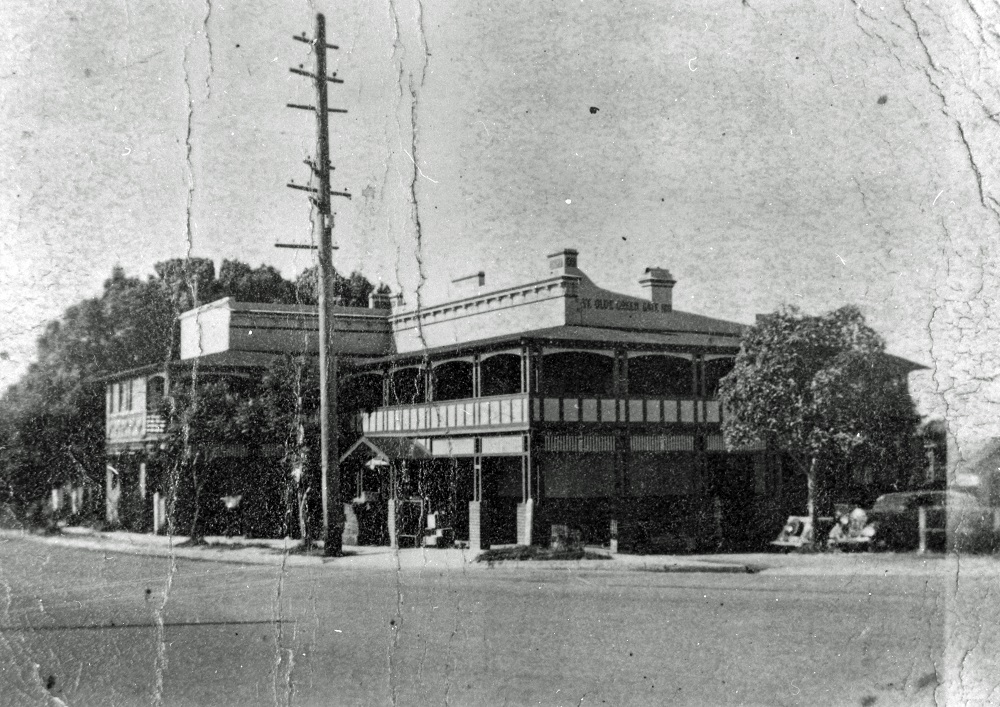
The Trial
The trial of Talisien Griffiths commenced in June 1922. Various witnesses were brought in, and a jury reviewed the evidence. The crown was pursuing the charge of murder. However, throughout the trial, it became apparent that there was not enough solid evidence to convince a jury, beyond a reasonable doubt, that Griffiths was responsible for the death or had even been in the area when the crime was committed. Key evidence failed to deliver. The crown could not prove the blood on Griffiths’ clothes to be human. The beer bottle found at the crime scene had been handled by too many men making it impossible to obtain a fingerprint that matched the accused. Furthermore, the defence accused the police of improper conduct by pressuring Griffiths for a confession.
The jury only retired for 5 minutes when they returned to the courtroom to deliver a verdict of ‘not guilty.’ Griffiths was discharged.
Another Cold Case
The murder of Mountford “Bully” Cook was added to a list of five cold-case murders in Sydney in 1922 alone. It was one of the most violent years in Sydney’s history. One hundred years later, the forgotten murder of Bully Cook remains unsolved.
The Crime Scene 100 Years Later
The most likely scene of the crime where Bully Cook’s body was found likely sits under, or in the backyard of, a mansion that was built at 35 Bell Street, Gordon in 1950.
